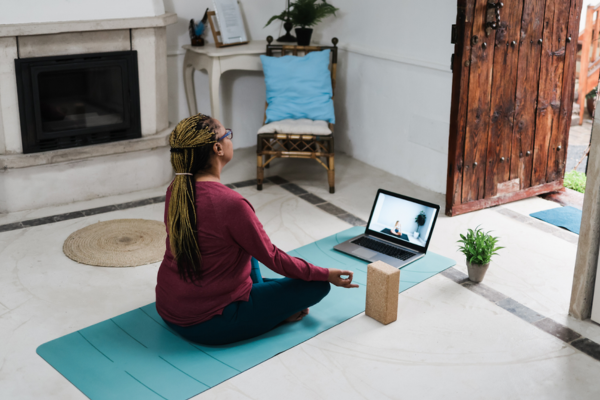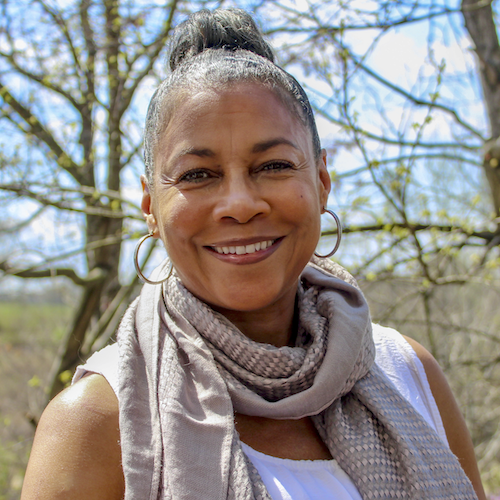By: Pamela Nicholas-Hoff
Highlights:
- Back-to-school is full of hope and promises, but how can educators stay true to these good intentions throughout the school year?
- Mindfulness is one solution in education that helps educators and youth-serving professionals be emotionally well regulated, and respond to students with compassion.
- Included in this blog are tips and strategies for increasing mindfulness in your work with students and youth.

For educators, the first day of school is similar to New Year’s Day, full of hope, promises and good intentions. For our students, we may commit to providing the best learning experiences, cultivating the most positive classroom climate, and responding with equanimity to others no matter the circumstances. For ourselves, we may also commit to self-care.
But similar to New Year’s resolutions, those beginning of the school year promises and resolutions are often overshadowed/overtaken by reality and the demands of our job. Students have traumatic experiences. Our classrooms are overcrowded. Schools are understaffed and have limited resources. So how do we maintain the commitments we make to ourselves and our students? Many educators are turning to mindfulness.
Importance of Mindfulness
Though not a solution to all problems, mindfulness has many well-documented benefits. Even brief mindful awareness practices have been shown to decrease stress1, and reduce implicit biases2 and discriminatory behavior3, and increase emotional regulation4. In addition, only eight-weeks of participating in a Mindfulness-Based Stress Reduction (MBSR) program that included 30 to 40 minutes of daily mediation practice resulted in positive changes in areas of the brain associated with learning, memory, emotion regulation, perspective-taking, empathy, compassion, and reduced reactivity.
Interventions targeting educators show promising results. Within the classroom, results from the Cultivating Awareness and Resilience in Education (CARE) professional development program5 may translate into educators listening more attentively to others, maintaining more present-centered, non-judgmental acceptance and receptivity to others’ thoughts and feelings, practicing greater self-regulation (i.e., lower reactivity and lower automaticity in reaction to normative child and adolescent behavior), maintaining greater awareness of and responsiveness to others’ individual needs, and maintaining greater compassion for self and others.
Educators who possess and demonstrate the aforementioned attributes and abilities are less likely to personalize student behavior thus reducing the chance that challenging classroom situations will escalate and result in negative outcomes (for students and teachers).
However, how do we establish and maintain a consistent mindfulness practice?
Practicing Mindfulness
People often mistakenly perceive that they do not have the time to practice. However, we make time for other types of self-care such as brushing our teeth, because we know the benefits of good oral hygiene and the adverse effects of poor oral hygiene. With this in mind, I suggest you view your practice as a visiting guest. Prioritize and intentionally make space and time for your mindfulness practice. If possible, practice in a space where you will not be disturbed and at a time when you will not be interrupted. Practice self-compassion and patience–the mind is structured to think; therefore, distractions are inevitable. When distractions occur, notice, and perhaps label the distraction, and return your attention to the target of your practice (e.g., the sensations of the breath).
If interested in MBSR, I invite you to visit Palouse Mindfulness which offers the complete program via an online, self-paced course at no cost. Imagine Mindfulness is another affordable, online option. The UVA Mindfulness Center also offers MBSR online.
If committing to 30 to 40 minutes of daily mindfulness practice is overwhelming, please take heart. Even a few minutes of consistent time in practice provides benefits. For example, try:
- Breathing: Taking three deep, full, diaphragmatic breaths can calm the nervous system and provide time to respond versus react to a situation. Box breathing is another option. Inhale deeply, hold the inhaled breath, exhale completely, and hold the exhaled breath. Maintain each phase for a count of four.
- Set an Intention: An intention acts as a navigation system that helps align our behavior and speech with our values. This practice involves identifying an intention for a given period of time (e.g., a class period, a day, etc.) and envisioning acting and speaking in a way that reflects that intention. After visualizing the intention, write and post your intention in a prominent place as a reminder of your commitment to your intention.
- Journaling: Reflecting upon and recording your experiences (either while engaging in your mindfulness practice or at other times) is a wonderful way to practice mindfulness. You can also generate and savor gratitude and positive emotions by recalling a positive experience and focusing on the physical sensations you experienced during that positive experience.
- Body Scan: A quick body scan helps us become aware of the way our emotions manifest physically. Being aware of the physical sensation associated with our emotions helps us better identify those emotions and respond to others with equanimity. Longer body scans are also beneficial.
- Leverage Technology: Use apps to support your practice–as a reminder to practice and/or to facilitate your practice. If affiliated with UVA, you may have access to the premium version of Insight Timer through the UVA Contemplative Sciences Center.
As educators, we have an obligation to keep our students safe and ensure they are treated justly. Through the practice of mindfulness, we can reduce implicit racial biases, cultivate social emotional competency and assess situations with nonjudgmental awareness, curiosity, empathy, and compassion thus helping to ensure the safety and just treatment of our students.
Citations
1 Carson et al., 2005
2 Fabbro et al., 2017; Lueke & Gibson, 2015; Stell & Farsides, 2016
3 Lueke & Gibson, 2016
4 Guendelman et al., 2017
5 Jennings et al., 2017
If you have any comments or questions about this post, please email Youth-Nex@virginia.edu. Please visit the Youth-Nex Homepage for up to date information about the work happening at the center.

Author Bio: Pamela Nicholas-Hoff is a triple Hoo and postdoctoral research associate supporting work in Youth-Nex and the Department of Curriculum, Instruction, and Special Education. Before earning her Ph.D., Pam spent 17 years teaching at the middle school level (five of those years were spent teaching at an alternative middle school serving students who were pushed out of traditional schools) and seven years teaching health and physical education teacher preparation courses. Pam is also a certified CARE facilitator and is working toward her certification to facilitate Mindfulness Based Stress Reduction courses. Her research focuses on using mindful- and compassion-based practices to mitigate teacher-based implicit biases, stress, and automatic responses and to eliminate exclusionary discipline disparities for historically marginalized students. In her spare time, Pam enjoys spending time with her family and reading.
